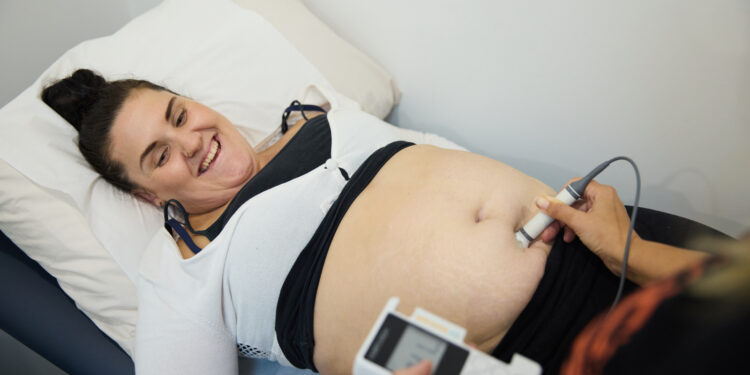Midwives’ Provision of Abortion-Related Services

Background
Unsafe abortion (i) is one of the five major causes of maternal mortality. Global, regional and national agencies have set goals and guidance for reducing high maternal mortality in general and abortion-related maternal mortality and morbidity in particular. Governments agree that ‘[…] in circumstances where abortion is not against the law health systems should train and equip health providers to provide safe services [….]’. Reports (ii) indicate that globally, 94% of women live in countries where abortion is legally permitted for one or more indications. Evidence demonstrates that access to safe abortion-related services can almost eliminate maternal deaths due to unsafe abortion. (iii) Recent global guidance includes abortion care as an essential element of basic reproductive health services and a means of reducing maternal mortality and morbidity (iv) (v) (vi) (vii)
Realising that authorised and well-educated midwives can provide competent and safe abortion-related services (viii) (ix) (x) (xi) many governments have modified their laws and policies to empower midwives to provide comprehensive abortion services. In some parts of the world maternal mortality rates are at critical levels. Abortion related mortality can be 60 times higher in low versus high resource countries (xii).
Position
ICM affirms that a woman who seeks or requires abortion-related services is entitled to be provided with such services by midwives.
In keeping with the above midwives should:
- Consider such care to be within the role of the midwife as defined by the laws and policies of his/her country
- Recognise the woman’s right to decide for herself and provide information, counselling and services according to the woman’s needs
- Refer the woman as appropriate for any further treatment that may be required and that is beyond the scope of midwifery practice
- Provide the woman (and where appropriate her family) with education concerning her future health, including contraception and planning for future pregnancy
- Recognise the emotional, psychological and social support which may be needed by the woman and respond appropriately.
The education of midwives should prepare them for their role in providing abortion-related services that ensure safety and wellbeing for the woman.
Recommendations
Member Associations are urged to seek to influence the education of midwives to ensure that they have the knowledge and skills to provide abortion-related services in line with the ICM Essential Competencies for Basic Midwifery Practice (2010).
Related ICM Documents
Other Relevant Documents
- ICPD.1994. Report of the International Conference on Population and Development. Cairo, Egypt.
- ICPD+5.1999. Implementing the Recommendations of the International Conference on Population and Development. ICPD 5-year Review and Appraisal..
- Independent Expert Review Group. 2012. Every woman, every child: From commitments to action: The first report of the independent Expert Review Group (iERG) on Information and Accountability for Women’s and Children’s Health. Geneva, Switzerland: World Health Organization.
- Ki-moon, B. 2010. Global strategy for women’s and children’s health. Geneva, Switzerland: Partnership for Maternal Health, Newborn, and Child Health.
- Maputo Declaration.2004. 4th Summit Of ACP Heads of State and Government. Maputo, Mozambique. Maputo Declaration: Together Shaping Our Future.
- PMNCH. 2011. Essential interventions, commodities and guidelines for reproductive, maternal, newborn and child health: A global review of the key interventions related to reproductive, maternal, newborn and child health. Geneva, Switzerland: Partnership for Maternal Health, Newborn, and Child Health.
- WHO. 2003 Reproductive Health Department. Safe abortion: Technical and policy guidance for health systems. Geneva, Switzerland. World Health Organisation
- WHO. 2011. Unsafe abortion: Global and regional estimates of the incidence of unsafe abortion and associated mortality in 2008 (6th ed.). Geneva, Switzerland: World Health Organization.
- WHO. 2012. Safe abortion: Technical and policy guidance for health systems (2nd ed.). Geneva, Switzerland: World Health Organization.
- WHO. 2014. Clinical practice handbook for Safe abortion. Geneva, Switzerland: World Health Organization.
Adopted at Glasgow Council meeting, 2008
Reviewed and adopted at Prague Council meeting, 2014
Due for next review 2020
(i) As defined by WHO 2014 (Ganatra, B. “From Concept to Measurement: Operationalizing WHO’s Definition of Unsafe Abortion” Bulletin of Wold Health Organization 2014;92:155 )
(ii) Singh, S., Sedgh, G. and Hussain, R. (2010), Unintended Pregnancy: Worldwide Levels, Trends, and Outcomes. Studies in Family Planning, 41: 241–250. doi: 10.1111/j.1728-4465.2010.00250.x
(iii) WHO Reproductive Health Department. Safe abortion: Technical and policy guidance for health systems. Geneva, Switzerland: WHO, 2003.
(iv) Ki-moon, B. 2010. Global strategy for women’s and children’s health.. Geneva, Switzerland: Partnership for Maternal Health, Newborn, and Child Health.
(v) PMNCH. 2011. Essential interventions, commodities and guidelines for reproductive, maternal, newborn and child health: A global review of the key interventions related to reproductive, maternal, newborn and child health. Geneva, Switzerland: Partnership for Maternal Health, Newborn, and Child Health.
(vi) WHO. 2012. Safe abortion: Technical and policy guidance for health systems (2nd ed.). Geneva, Switzerland: World Health Organization.
(vii) WHO. 2014. Clinical practice handbook for Safe abortion. Geneva, Switzerland: World Health Organization.
(viii) Global Health Workforce Alliance (GHWA) (2013). Mid-level health workers for delivery of essential health services: A global systematic review and country experiences. Geneva, Switzerland: World Health Organization.
(ix) World Health Organization (WHO) (2012). Safe abortion: Technical and policy guidance for health systems (2nd ed.). Geneva, Switzerland: World Health Organization.
(x) World Health Organization. (WHO) (2010). Mid-level health providers: a promising resource to achieve the Millennium Development Goals. Geneva, Switzerland: World Health Organization.
(xi) Renner R, Brahmi D, Kapp N. Who can provide effective and safe termination of pregnancy care? A systematic review. BJOG 2013;120:23-31.
(xii) Singh, S., Sedgh, G. and Hussain, R. (2010), Unintended Pregnancy: Worldwide Levels, Trends, and Outcomes. Studies in Family Planning, 41: 241–250. doi: 10.1111/j.1728-4465.2010.00250.x
PS2008_011 V2014
